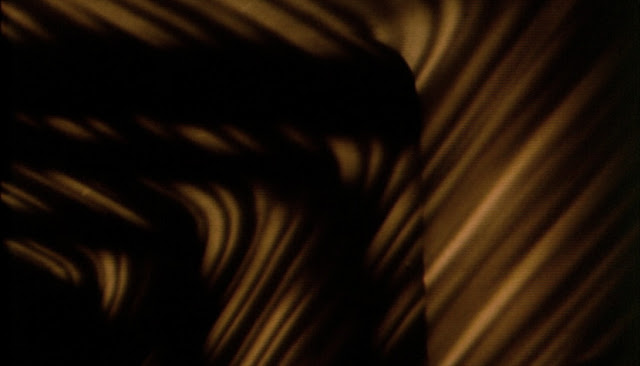WHO: Val Lewton is credited as the producer and uncredited as a writer on this.
WHAT: It sounds like the basest of exploitation films from its title, but say
I Walked With A Zombie enough times and you eventually may hear in it the poetry that Lewton and his director Jacques Tourneur were able to imbue into the film itself. Yes it deals with the supernatural but in perhaps the most elegant and honest way imaginable in a film. Lewton was tasked with creating low-cost films to compete with the iconic and incredibly popular monsters of the Universal House of Horrors, which in the 1940s was given to team-up films like
Frankenstein Meets the Wolf Man, privileging characters over genuine chills. Lewton's studio RKO had no properties suitable for such treatment (how can you make a
King Kong movie for less than $150,000?), which was all the better for Lewton: he applied his imagination and drew inspiration from his own biography (
Cat People, his first film, in some ways mirrored his personal history as a Crimea-born immigrant from a Jewish-turned-Russian Orthodox family, who became baptized as Episcopalian upon arrival in the US) and from public-domain literature.
I Walked With A Zombie is loosely an adaptation of Charlotte Bronte's
Jane Eyre, transposed to a fictitious Caribbean isle called Saint Sebastian. If it shares (as some commentators have noted) similarities to Alfred Hitchcock's
Eyre-esque
Rebecca, it wouldn't be a surprise as Lewton assisted in that Oscar-winning film's production while at his previous Hollywood job working under mega-producer David O. Selznick. But
I Walked With A Zombie is, in my book, a better film than
Rebecca. It packs twice as much eerieness and overwhelming mood into half the running time of the Hitchcock film, and includes unique-for-its-time commentary on relations between whites and blacks, and one group's relative obliviousness to the other. It's a masterpiece for all these reasons and more.
WHERE/WHEN: Today and tomorrow at the
Stanford Theatre at 7:30.
WHY: Although David Packard and his film booking team behind the Stanford have been known to program films based on current events (such as timing a run of the 1951 musical
Royal Wedding with
Prince William's), I can't remember ever detecting any acknowledgement of current Hollywood trends in the venue's programming choices. After all, the Stanford devotes its screen entirely to films made before the Lyndon B. Johnson Presidential administration (with the very occasional exception made for a few certain favored filmmakers like
Howard Hawks,
Akira Kurosawa,
Katharine Hepburn and
Satyajit Ray). Why should they notice what's playing at the multiplexes in nearby Redwood City or Mountain View?
But today's double bill of two Lewton-produced films,
I Walked With A Zombie and
Isle of the Dead (a film about a plague and quarantine in Greece, and inspired by an
Arnold Böcklin painting that is seen hanging in
I Walked With A Zombie as well), seems somehow calculated as a response to the nation's current #2 movie at the box office, which has already in one week brought in more raw dollars (not adjusted for inflation) than any other zombie movie released in US history. I haven't seen
World War Z so perhaps I should refrain from snide judgments- although I've never been a fan of its director Marc Forster.
I Walked With A Zombie was a big box office hit in its day as well, and likely was sneered at sight unseen by certain moviegoers, and it lives on today as a cult classic appreciated both by horror fans and art-movie lovers.
More films appealing to arthouse and horror audiences playing on Frisco Bay this summer include
Cat People, booked at the Stanford August 21-23 on a double-bill with the decidedly-non-horror (but exquisitely beautiful) Lewton picture
Curse of the Cat People. The
Castro Theatre brings a July 12th double-bill of
The Exorcist (by avowed Lewton aficionado William Friedkin) in DCP, and a 35mm print of Dario Argento's
Suspiria. The day before that another Castro bill places Charles Laughton's 1955
Night of the Hunter, which I dare say might be called Lewtonesque, with a film by another Lewton fan, Martin Scorsese; it's his 1991 remake of
Cape Fear; both of these in 35mm. Horror is practically the only major genre not included on
Silent Film Festival program, which brings comedies, dramas, a
Western and a Scandinavian "
Northern" to the Castro July 18-21. So the
Balboa Theatre's July 13th screening of Paul Wegener's
The Golem will have to suffice for silent film fans eager to see early precursors to the horrors of Universal and Lewton.
The
Roxie, meanwhile, is showing another Dario Argento classic on 35mm:
Tenebre, which like
Suspiria was scored by the members of the band Goblin (who is making a stop at the
Regency Ballroom in San Francisco October 20th as part of its first-ever North American tour; tickets go on sale tomorrow). They also screen
Berberian Sound Studio tonight (it's last night of a week-long run) and, as part of the
Frozen Film Festival, a documentary about the making of
Rosemary's Baby.
Finally, the Mission Street restaurant
Foreign Cinema is showing
Rebecca nightly from July 19 through August 4th. I've never actually attended this venue, and am not sure if they still show 35mm prints as they did when they first opened in 1999, nor whether it's at all a worthwhile place to watch a movie- most reports I've heard say the films are really used as no more than ambiance for the dinner experience; in other words it's no
New Parkway. But I'd like to hear from anyone who has had experiences eating and trying to watch a movie there.
HOW:
I Walked With A Zombie screens on a 35mm double-bill with
Isle of the Dead.



















